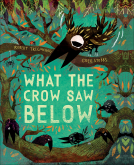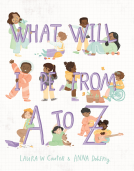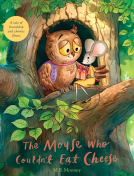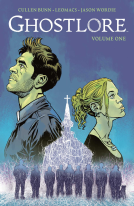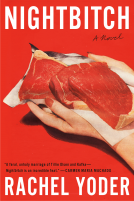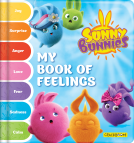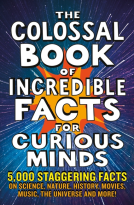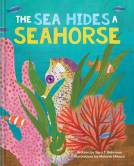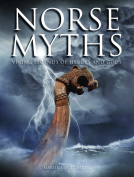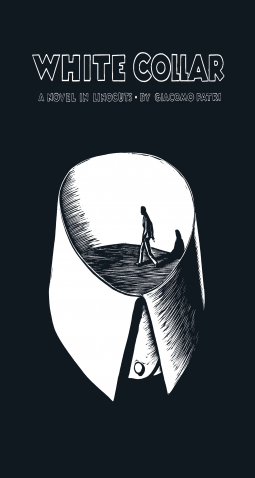
White Collar
A Novel in Linocuts
by Giacomo Patri
This title was previously available on NetGalley and is now archived.
Send NetGalley books directly to your Kindle or Kindle app
1
To read on a Kindle or Kindle app, please add kindle@netgalley.com as an approved email address to receive files in your Amazon account. Click here for step-by-step instructions.
2
Also find your Kindle email address within your Amazon account, and enter it here.
Pub Date Sep 21 2016 | Archive Date Dec 06 2016
Description
Because of its controversial depictions of class struggle, unionization, and abortion, White Collar was shunned by publishers, and the author was forced to print his own editions. Early copies are extremely rare; this Dover edition marks the volume's first return to print in decades, and its very first appearance in hardcover.
Suggested for mature readers.
Available Editions
| EDITION | Hardcover |
| ISBN | 9780486805917 |
| PRICE | $24.95 (USD) |
| PAGES | 144 |
Featured Reviews
 David W, Media/Journalist
David W, Media/Journalist
As dramatic as anything can be
While I never review novels, White Collar is hardly that. It is graphic art as dramatic as anything you might have seen. It is also largely autobiographical, and a clear message from the political left. All these things attracted me, and I was more than amply rewarded. This is a gem I had no knowledge of.
Patri seems to have made this effort to show Labor that white collar workers were just as much at risk, just as much abused, and just as greatly suffering in the Great Depression as blue collar workers were. It’s a simple story of struggle and loss, but done without text – a graphic novel from 80 years ago. He had to print it himself, of course, but it has gone on to worldwide acclaim (and publication) ever since.
It took Patri, a largely self-taught illustrator, Italian immigrant, and polio victim, two years to produce the 125 images in the book. They are linocuts – cuts in linoleum mounted on a wood base. As an advertising illustrator by profession, Patri seemed to want to shed blood to send his message this way.
The style reminds me of my own favorite illustrator of the same era, Boris Artzybasheff. They both have an art deco, stylish swirl, a high contrast starkness, and an eye-catching dramatic effect on the viewer.
I am delighted Dover has resurrected this book for a new age – of wage slaves, foreclosure victims, and debtors. It might be an old story, but it remains fresh.
David Wineberg
This is probably one of the great graphic novels of our time. It is probably the most important story ever told. It is probably of great historical importance. It is probably all these things, but it isn't for me.
It is a well done, wordless story of a man being pushed out of the white collar world by the Great Depression, and how he and his family suffers as he works to make a living. Life is unfair. Workers are not treated well. Greed is everywhere. The 1%s have it all. Hmm, sounds familiar.
So, while the story is well done, and well illustrated, and sad, it didn't engage me, other than to make me feel sorry for him, and for everyone who struggled, and still struggles.
Read it for the historical value. Read it because you want to see this graphic novel written before graphic novels became popular. Read it to see how the protagonist suffers.
Thanks to Netgalley for making this book available for an honest review.
 Paige C, Reviewer
Paige C, Reviewer
I had never heard of Giacomo Patri--and no wonder, when his Wikipedia page consists of just seven paltry sentences. But based on the short biography given in the introduction of this book, I would expect him to be better known, at least in leftist circles. He and his first wife, also an artist (paper & bookbinding), were "progressive radical humanism" activists from the 1920s on, and supported the labor movement, including unions and unionizing, anti-lynching campaigns, and accessible art--after the school he taught for was placed on the "Subversive List" during the run up to the McCarthy era, he opened his own school, which ran affordable art classes in the evening so that workers could more easily attend. Anyway he sounds neat and they should make a movie about him. And this book?
As you might guess from the author's biography, the book is political in nature. Besides the short introduction and an even shorter afterword, the book is just linocuts--over 100 of them. There are no words besides what is written in shop windows or sparingly spelled out for us--"BANK" is spelled backwards in one window; later, pieces of paper say "rent," "milk," "taxes." There is no "narrator," which sets it apart from many graphic novels and makes it seem more like a book of art. But even though there is no narrator, there is a narrative. The illustrations are mostly dark, and it is a mostly dark story. It follows an illustrator who, during the Great Depression, loses his job at an advertising agency and has to struggle to find a new one. One of the things I loved about this book is that it frames the problem as a sociological one--despite the main character's determination to pull himself up by his bootstraps and his above-average ingenuity (taking out loans to open his own store), it's not enough. The problem is a social one, and too widespread for any individual to stand much of a chance against.
When I first looked at the image on the cover of this book, I thought, "Hmm, that white collar kind of looks like a prison." And it is--Patri argues that white collar workers' desire to see themselves as separate from and above "mere" laborers isn't doing them any favors. They are blinded to a common cause. I see a lot of parallels here with the vanishing middle class. Patri seems more leftist than many liberals today, but I guess that shouldn't surprise me; we often think of the past as being more conservative, but it really depends on the issue being talking about and what time period it's being compared to. For instance, reading about the enclosure of the commons in Silvia Federici's book Caliban and the Witch, I was surprised to learn that tens of thousands of people fought and fought hard--thousands losing their lives--against the encroachment of capitalism. In the 1300s, 26,000 people died in a single battle after a decades-long movement for "a 'workers' democracy' based on the suppression of all authorities...Their goal, according to Peter Boissonnaide, was 'to raise journeymen against masters, wage earners against great entrepreneurs, peasants against lord and clergy...'" (Federici, 2004). I can't imagine anything a fraction so radically leftist happening in my country today. Another way that Patri's story mirrors our own is through reproductive rights: the main character's wife was not able to get a safe and legal abortion in 1929, and while today in the US we have de jure legal abortion, in reality there are often many barriers to securing one. So while it was originally published over 76 years ago, about events of almost 90 years ago, it is still sadly relevant. I would recommend it for that reason and for its short and well-told story. Also, I liked the art a lot. The classic linocut style appeals to me, and even if it's not 100% your favorite style, it is effective and evocative when telling its story.
 Alexia P, Reviewer
Alexia P, Reviewer
Wordless, this classic graphic novel portrays an epoch by expressing a social message through art. Giacomo created this greatly autobiographical novel to contribute to the union movement, contrasting the lives of middle class and lower class workers at the time.
In this case, a picture is definitely worth a thousand words—or more.
 Paul M, Reviewer
Paul M, Reviewer
The Great Depression seems like ancient history to young people today. Giacomo Patri's White Collar: A Novel in Linocuts reminds us that it's not than ancient after all. The struggles of families in the depression doesn't seem too far off from struggles some families have today.
Patri self published White Collar in the late 1930s, then was picked up by a publisher in 1940. The stark black-and-white illustrations and the bare-bones, wordless story powerfully communicate a simple message: the road to success can be filled with obstacles, many of which come from powers outside of your control. The protagonist starts his career as an illustrator, but the Great Depression hits, shutting his employer's doors. He makes a go of it, opening his own shop, looking for work, but the economy works against him. He finally comes to embrace the labor movement which he seemed initially to reject.
White Collar is an interesting first-person artifact from the Depression era with obvious relevance today. It's heavy-handed, in a propagandistic sort of way, but not so much that it becomes impersonal and realistic. The linotype technique is not very visually appealing to me, but it is effective and supports the tone of the story.
Thanks to NetGalley and the publisher for the complimentary electronic review copy!
This textless graphic novel recounts a section of the life of an advertising man, his struggles with unemployment after the Great Depression, and the unionization and organization of workers around him. The fact that there are no words to accompany the striking artwork is a testament to the strength of graphic storytelling.
 John L, Reviewer
John L, Reviewer
I'd rather not go into the politics of this book: oh, so you're poor and evicted? – well then, just join a post-Depression Million Man March and pretend that will help get everything better; partly because, as I suggest, they can be facile, and partly because they're not the be-all and end-all of the book. Yes, it is a tale born out of socialism but it's a social commentary at work, and it's a very good one. Our hero is trying to make his path through life, which is visualised here, among many different ways, as walking up a ramp encircling a globe – like if Saturn's rings were a spiral staircase. However, they're patchy, broken, cracking under his feet. As he tries and tries to keep his family in food and a home, he finds his artworks and creative life redundant; even in business he cannot succeed with his mindset. Of course, all the pawnbrokers are having a whale of a time – although it's about now I must call the book out for having a horrid image of usurers with rampantly ugly, Jewish faces – is this an immigrant's tale from the 1940s USA, or the 2016 UK Labour Party manifesto?
That aside, the linocuts here are stunning, and the graphic design work makes this a perfectly understandable work of art, in keeping with the social tradition. Wonderful imagery, perfectly befitting a wordless novel, is matched by a simple eye for character, and simple placement of captions in the form of diegetic lettering (book titles, letterheads and more) like those ancient cartoons. You do kind of want to point out the fallacious ending, and that anti-Semitism cannot be ignored, but on the whole this is a book that certainly, and rightfully, stakes its claim as a lost graphic novel classic. I'm very happy Dover have reprinted it for the likes of us to still be reading it.
 Bill B, Reviewer
Bill B, Reviewer
White Coller is a very well done series of linoleum cut prints representing the difficulties suffered by an American family during the Great Depression. The separate chapters are marked by prints in orange with symbolic imagery. This is a overall very good graphic novel, but suffers by comparison with the superb novels without words engrave in wood by Lynd Ward.
 Reviewer 359186
Reviewer 359186
The Arrival by Shaun Tan is one of my favourite books of all time, yet it's wordless. So I had no worries that the lack of words would impair White Collar, provided the visuals were sufficiently strong. And they are.
The book shows how a white, rather than blue, collar does not protect the middle class from the effects of economic downturns. In this case, it's the Great Depression, and the hard edged black-and-white linocuts by Giacomo Patri, with the novelty of being from an earlier time, tell the story graphically. In all there are 128 linocuts, which must have been a formidable physical task, not to mention the design and development decisions that had to be taken and the effort to maintain the freshness.
Well worth a look..
There is also an informative introduction.
 Tom M, Reviewer
Tom M, Reviewer
White Collar: A Novel in Linocuts by Giacomo Patri is a striking work of art. This is a great example of an early graphic novel. Patri originally self-published the book in true DIY style in the late 1930s. The novel depicts the trials of an advertising illustrator and his family in the years following the Great Depression.
The story begins in 1929 when the illustrator is gainfully employed. He seems to look down on or at least ignore the struggling blue collar workers he passes on his commute. He is the proverbial company man. Then the stock market crashes. He loses his job, and we see his family's journey on the downward spiral. White collar is obviously socialist labor movement propaganda; however, the simple truths it embodies are profound.
Like a silent movie, the novel has no dialogue or traditional narration panels. Patri sparingly uses words on books, bills, and signs to give clues of the action taking place. He captures a remarkable amount of emotion in the stark black and white of the linocuts. The interactions between the illustrator and his wife are particularly painful. As a graphic novel, this is a early example of illustration being used to deliver a long-form story with serious content meant for adults.
The original copies hand made by Patri are difficult to find and very expensive. Luckily, Dover Graphic Novels has recently published affordable versions in hardcover and paperback. It's a very nice piece of graphic novel history.
Readers who liked this book also liked:
Nigel Henbest; Simon Brew; Sarah Tomley; Ken Okona-Mensah; Tom Parfitt; Trevor Davies; Chas Newkey-Burden
Entertainment & Pop Culture, Humor & Satire, Nonfiction (Adult)
Sara T. Behrman
Children's Fiction, Outdoors & Nature, Parenting & Families
